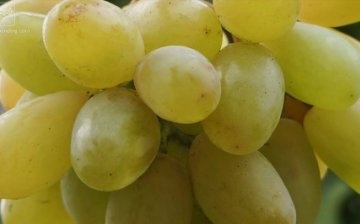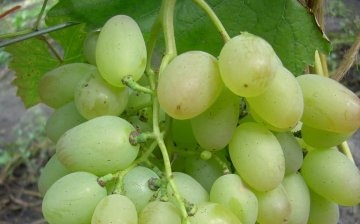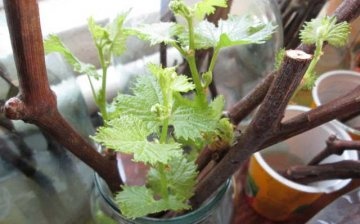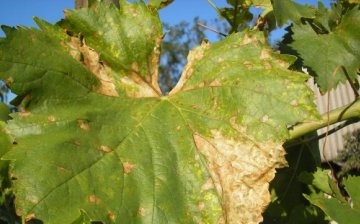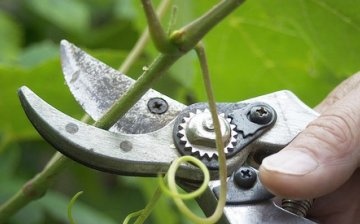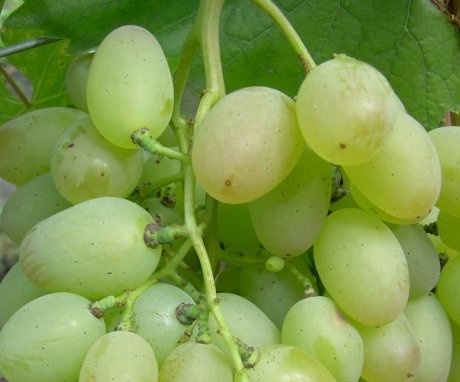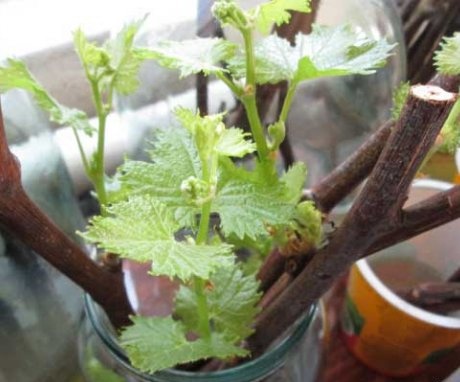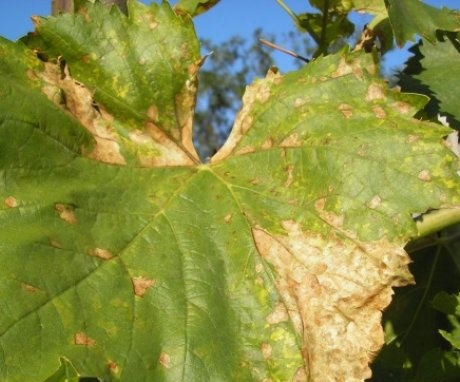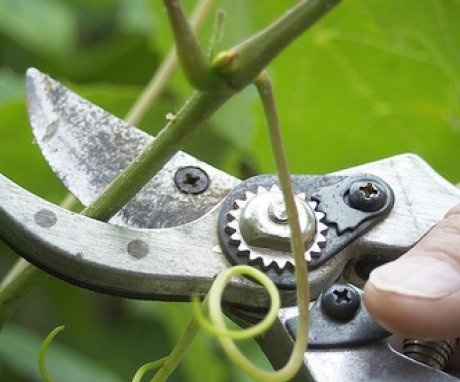Elegant grapes: features of the variety, reproduction and care
The Elegant grape is obtained by crossing the varieties Frumoasa alba and Delight. This canteen matures grape early, 110 days after flowering... Ripening of the vine occurs over the entire length of the shoot. The bunches are large from 300 to 600 grams. Berries are oval, large, white-green in color with slightly visible stripes. The grapes taste sweet, with a slightly perceptible aroma of nutmeg. The skin is thin, there are few seeds. It is considered the most delicious early grape.
Content:
Growing conditions
Grape Elegant varieties are not afraid of frosts below 20 degrees, as well as heat and drought. With abundant watering yield increases. It grows best in the middle lane and in the south of Russia. Ripens around the second half of summer.
Grows best on vigorous rootstock.
This grape variety does not need to be lifted high in the spring for garter, because in the fall, the vine often cracks when it is laid. Grape bushes Elegant should not be overloaded with berries, it can get sick and then recover for a long time. This will make the vine thin and short. Elegant is always vintage, easy to transport.
Reproduction methods
There are two ways breeding grapes: cuttings and seedlings. The first method is used more often.
Cutting grapes:
- For this, cuttings are prepared in the fall after the leaves have fallen. The branches choose fruitful, straight ones. They are wrapped in polyethylene and placed either in a refrigerator or in a cellar.
- They look in the spring, are alive cuttings or not. If water comes out during the cut, then the branches are ready for planting.
- They are soaked in warm spring water. After two days, the cuttings are germinated in a plastic bottle, or in boxes.
- As soon as the leaves appear, they are planted in the ground.
When planting this grape variety with seedlings, fertile soil is poured onto the bottom of the pit, having previously mixed it with phosphate and potash fertilizers... There are two planting methods: deepening the seedlings by a meter with and without an irrigation trough. In this case, two buds must be above the top layer of the soil. After wintering, two shoots grow from these buds, on which stepchildren can appear during the summer. They are pinched over the second or third sheet. The additional shoots that appear must be broken out.
At the end of summer, the tops of the shoots are pinched, and in October, part of the vine that has not ripened is cut off.
Then it is necessary to lay the shoots in the ditches and cover them with earth. Dry shavings are also used for this. In this case, the shoots should not be wet, otherwise they will die. In the spring, they are freed from the tire, dried, and then produced pruning... After that, four shoots remain, and they are looked after. These shoots are called sleeves. By the fall, 8 shoots grow on them, two vines on each arm. The one that will bear fruit is cut in the fall, and the other will replace it next year.
At a fruiting shoot, they must pinch the top as soon as they bloom flowers... Then nutrients in large quantities will go to the bunches, and they will become denser. Fruit grape begins in the second or third year after planting.
Diseases and pests
The variety is resistant to diseases... He does not succumb to diseases of gray rot, mildew, oidium. He is not afraid of wasps attacks. But there are diseases and pests that can infect grapes:
- Black dots appear on bushes and fruits. This fungal disease occurs as a result of high humidity. It is difficult to treat it. Affected leaves, branches and fruits are cut out, and in the fall they are sprayed with Bordeaux mixture or drugs copper.
- If the color of the leaves changes, then it is necessary to fertilize the grapes with iron vitriol.
- Grape itch settles on the leaves, while they turn pinkish. Destroy pest itching can be phosphamide preparations.
- The leafworm harms both foliage, and inflorescences, and berries. To prevent this from happening, in the spring, when removing the cover from the bushes, burn the old bark. And you can process grapes to destroy the pest with the drugs Zolon, Talstar.
Care Tips
Autumn bushes grapes they are fed with superphosphate, potassium salt, and in the spring with ammonium nitrate. At the beginning of the growing season, you can feed the grapes with bird droppings diluted with water; in August, one hundred grams of wood ash dissolved in a bucket of water is added.
During the summer, the soil under the bushes is loosened and weeded.
The average yield of elegant grapes is 7-10 kilograms. With proper care, you can collect up to 15 kilograms.
More information can be found in the video.



